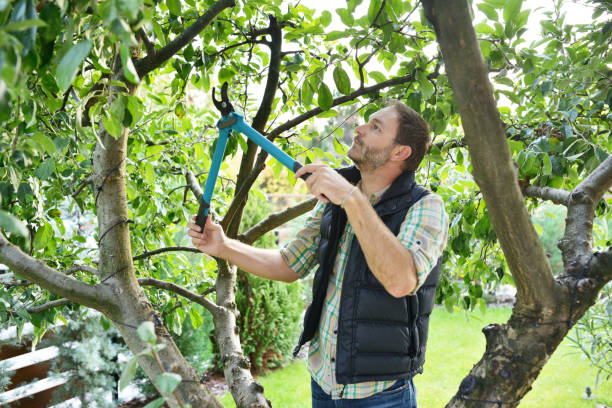As caretakers of nature, it is crucial to understand the significance of pruning trees. However, determining the optimal frequency for this practice can be challenging. How often should trees be pruned? And what exactly are the benefits of regular pruning? These questions have intrigued professionals and enthusiasts alike as they seek to balance maintaining the health and aesthetics of trees.
We will explore the recommended frequency for tree pruning and delve into the numerous advantages that regular pruning can bring. So, let us embark on a journey to uncover the secrets of proper tree care and discover why pruning is essential for their well-being.
Recommended Frequency for Tree Pruning
Determining the recommended frequency for tree pruning is essential to maintaining the health and aesthetics of your trees. Regular pruning not only enhances the overall appearance of the trees but also promotes their growth and longevity. The frequency of pruning can vary depending on several factors, including the type of tree, its age, and its current condition.
Pruning is typically done to establish a strong structure and promote proper growth for young trees. It is recommended to prune young trees annually, removing any dead or diseased branches and shaping the tree to encourage a balanced form. This early pruning helps to prevent future problems and ensures the tree develops a sturdy and attractive shape as it matures.
Mature trees, on the other hand, require less frequent pruning. Generally, pruning mature trees every 3-5 years is sufficient to maintain their health and structural integrity. However, certain species may require more frequent pruning, especially if they develop weak or heavy branches.
It is important to note that timing is also crucial for pruning. Pruning during the dormant season, when the tree is not actively growing, is often recommended as it minimizes stress on the tree and reduces the risk of disease transmission.
Benefits of Regular Pruning
Regular pruning offers numerous benefits to the overall health and appearance of trees, making it an essential practice for tree maintenance. One of the primary benefits of regular pruning is improved tree structure. By removing dead or damaged branches, pruning helps to reduce the risk of tree failure and falling limbs, making trees safer for people and property. Additionally, pruning can enhance the aesthetics of trees by promoting a more balanced and attractive form.
Regular pruning also plays a crucial role in maintaining the health of trees. By removing diseased or infested branches, pruning helps to prevent the spread of pests and diseases throughout the tree. It also increases air circulation and sunlight penetration, reducing the risk of fungal infections and promoting tree vigor. Pruning can also help to stimulate new growth, leading to denser foliage and improved flowering or fruit production.
Furthermore, regular pruning can improve the overall longevity of trees. Pruning helps reduce the stress on the tree by removing weak or crowded branches and promotes healthier growth. This can prolong the lifespan of trees and enhance their ability to withstand harsh weather conditions and environmental stresses.

